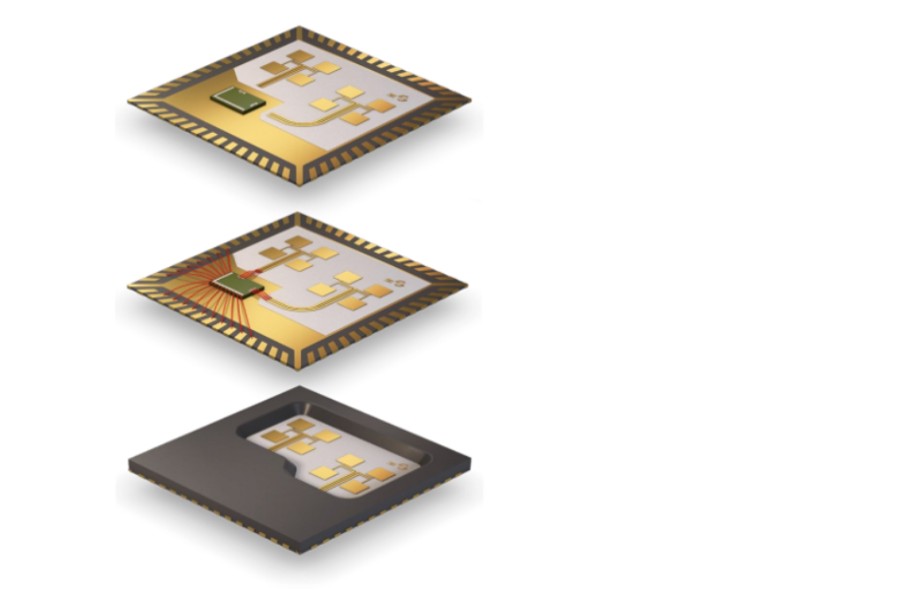Commercial 240GHz Radar Transceiver
Indie Semiconductor has recently launched the world’s first commercial fully integrated 240 GHz radar front-end (RFE) silicon transceiver, the TRA240091. The launch of 240 GHz transceiver solution marks a significant leap forward in radar technology; it enhances safety within vehicle cabins and revolutionizes industrial monitoring applications. The solution is adaptable to all weather scenarios and environments, and includes market-leading clutter suppression of rain, waves and wind turbines. This device offers unprecedented sensing resolution and system performance, enabling highest precision use cases within autotech and industrial applications. It is a cascadable radar front-end with an operating bandwidth of up to 45 GHz at 240 GHz, making it ideal for high-resolution applications within the license-free 244-246 GHz ISM band and beyond. The 240 GHz radar technology can be used in various automotive and industrial applications, such as in-cabin driver and occupant monitoring, air spring-based suspension settings assessment, real-time road surface quality and hazard assessment, gas tank level monitoring, material thickness measurement, end-of-line product quality inspection, and security scanners. This new product from Indie Semiconductor is a game-changer in radar resolution, integration, and system cost, offering significant improvements for various industries.
Working Principle
Transmitter: The transmitter generates a 240GHz signal using an oscillator. This signal is then amplified to a sufficient power level for transmission.
Antenna: The antenna system emits the radio waves into the environment in a controlled manner. The antenna’s design is crucial for achieving the desired beam shape and directionality.
Target Reflection: When the transmitted waves encounter an object, a portion of the signal is reflected back towards the radar.
Receiver: The receiver captures the reflected signal. It amplifies and processes the received signal to extract information about the object’s distance, speed, and direction.
Signal Processing: The received signal is processed to filter out noise and extract useful information. This includes techniques such as Doppler processing for detecting moving objects and range gating for determining the distance to the target.
Data Interpretation: The processed data is interpreted to extract meaningful information about the target, such as its size, shape, speed, and distance.
Applications: 240GHz radar transceivers are used in various applications such as automotive radar for collision avoidance systems, industrial sensing for level measurement and object detection, and security systems for perimeter surveillance.
Applications
A commercial 240GHz radar transceiver can be used in various applications due to its high frequency and precision. Some potential applications include:
Automotive: for advanced driver assistance systems (ADAS), such as collision avoidance, parking assistance, and adaptive cruise control.
Industrial: for level sensing, distance measurement, and object detection in manufacturing and industrial automation.
Aerospace and defense: for target detection, tracking, and surveillance in unmanned aerial vehicles (UAVs), aircraft, and defense systems.
Healthcare: for imaging, monitoring, and detecting vital signs, such as respiration and heartbeat, through clothing or obstacles.
Environmental monitoring: for detecting and tracking pollutants, gases, and other environmental factors in real-time.
Security: for perimeter surveillance, intrusion detection, and people counting in public spaces and buildings.
Advantages
A commercial 240GHz radar transceiver can be used in various applications due to its high frequency and precision. Some potential applications include:
Automotive: for advanced driver assistance systems (ADAS), such as collision avoidance, parking assistance, and adaptive cruise control.
Industrial: for level sensing, distance measurement, and object detection in manufacturing and industrial automation.
Aerospace and defense: for target detection, tracking, and surveillance in unmanned aerial vehicles (UAVs), aircraft, and defense systems.
Healthcare: for imaging, monitoring, and detecting vital signs, such as respiration and heartbeat, through clothing or obstacles.
Environmental monitoring: for detecting and tracking pollutants, gases, and other environmental factors in real-time.
Security: for perimeter surveillance, intrusion detection, and people counting in public spaces and buildings.
Challenges
Cost: Developing and manufacturing high-frequency radar systems can be expensive due to the need for precise components and specialized manufacturing processes.
Range and Penetration: Higher frequency signals have shorter range and are more easily attenuated by obstacles, reducing their effectiveness for long-range or through-wall applications.
Interference: The 240GHz frequency band is shared with other applications, leading to potential interference issues that can affect the performance of radar systems.
Resolution and Accuracy: Achieving high resolution and accuracy at 240GHz can be challenging due to factors such as signal processing complexity and environmental effects.
Regulatory Hurdles: Meeting regulatory requirements for operating at 240GHz, including spectrum allocation and power restrictions, can pose challenges for commercial radar systems.
Integration: Integrating 240GHz radar systems into existing infrastructure or products may require additional development and customization, adding complexity and cost.
Environmental Factors: Environmental conditions such as weather, temperature, and humidity can affect the performance of 240GHz radar systems, requiring mitigation strategies.
Source:

